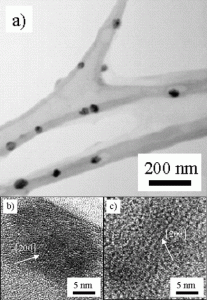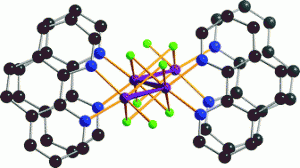I am delighted to announce that Professor Tetsuro Murahashi from Osaka University has been awarded the inaugural Dalton Transactions Asian Lectureship for his elegant work in the field of inorganic and organometallic chemistry, in particular his research in the areas of organopalladium chemistry and organic pi-conjugated systems.
The Dalton Transactions Asian Lectureship was established this year to recognise the achievements of an emerging Asian/Australasian inorganic chemist. We already had in existence two Lectureship Awards spanning the Americas and Europe and Africa, and this new award covers all of Asia and Australasia. ‘It is my great honor to receive the Dalton Transactions Asian Lectureship Award,’ said Professor Murahashi upon being notified last week. Professor Murahashi plans to present the inaugural Dalton Transactions Asian Lectureship next year and we will keep you posted about the arrangements!
Tetsuro Murahashi studied chemistry in Osaka University, Japan where he graduated in 1995. He obtained a JSPS scholarship for graduate study at Osaka under the direction of Professor Hideo Kurosawa. After recieving his doctorate in 1999 for his work on reactive dinuclear Pd-Pd complexes, Tetsuro was appointed as an assistant professor at Osaka University. In 2003, he moved to MIT (Cambridge, USA) to carry out a JSPS research abroad program in the group of Professor Christopher C. Cummins, where he studied the dinitrogen activation by low-coordinate transition metal complexes. He returned to Osaka in 2005 and two years later, was promoted to the position of associate professor at Osaka University. In the same year, Tetsuro was awarded the Chemical Society of Japan (CSJ) Award for Young Chemists.Tetsuro’s research concentrates on inorganic and organometallic reaction chemistry, particularly on the reactivity study of highly reaction transaction metal complexes.
Read more about Tetsuro’s research on his webpage at Osaka University.
And check out some of his recent articles:
Metallocenoids of platinum: Syntheses and structures of triangular triplatinum sandwich complexes of cycloheptatrienyl
Tetsuro Murahashi, Kentaro Usui, Ryou Inoue, Sensuke Ogoshi and Hideo Kurosawa
Chem. Sci., 2011, DOI: 10.1039/C0SC00269K, Edge Article
Structures of two haptotropic isomers generated by the sliding of 1,3,5-triene ligands on a Pd–Pd–Pd chain
Tetsuro Murahashi, Yukari Mino, Koji Chiyoda, Sensuke Ogoshi and Hideo Kurosawa
Chem. Commun., 2008, 4061-4063 DOI: 10.1039/B806824K
A stable zerovalent palladium chain enveloped by a π-electron sheath of conjugated polyene ligands
Yasuki Tatsumi, Tetsuro Murahashi, Mitsue Okada, Sensuke Ogoshi and Hideo Kurosawa
Chem. Commun., 2008, 477-479 DOI: 10.1039/B714530F












![Diagram showing the [Bi3GaS5]2+ cation and the trimeric star-shaped [Ga3Cl10]− anion](https://blogs.rsc.org/dt/files/2010/11/c0dt00985g-ga1-300x135.gif)



